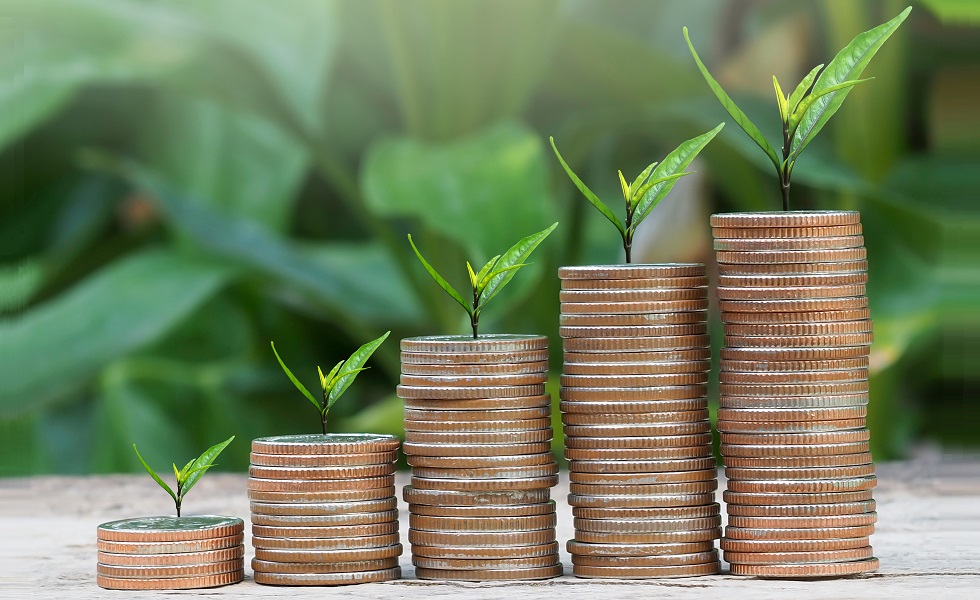Tikehau Capital: How strategic financing can help navigate the climate transition
Tikehau Capital: How strategic financing can help navigate the climate transition

- Confronting the reality of climate change is now imperative, with the operations of our economy playing a crucial role in creating the climate crisis.
- But, paradoxically, the economy also has the potential to facilitate adaptation, control and resolution of the crisis through decarbonization.
- The finance sector holds the responsibility to route global savings towards the ecological transition of our economy, presenting an opportunity as significant as the industrial revolution, but at the pace of the digital revolution.
This piece first appeared on the World Economic Forum Agenda website.
The Earth is experiencing a drastic rise in temperature, reaching an average increase of 1.2°C since the pre-industrial era. Unprecedented heatwaves with temperatures exceeding 45°C have impacted the United States, Europe and Asia, leading to water shortages, power outages and uncontrollable wildfires. In 2023, polar ice melting and historically high sea temperatures have reached alarming levels.
The Intergovernmental Panel on Climate Change (IPCC) recently released the first part of its sixth assessment report, affirming the significant contribution of human activity to global warming. Despite various emission scenarios, global warming is projected to reach 1.5°C by the early 2030s, displacing approximately 1 billion people for each additional degree of warming.
Confronting the reality of climate change is now imperative, with the operations of our economy playing a crucial role in creating the climate crisis. Paradoxically, the economy also has the potential to facilitate adaptation, control and resolution of the crisis through decarbonization. Understanding the economic lessons, particularly the 'circular flow model,' reveals the oversight of the economy's dependence on the stability of our biosphere.
Over the past 12,000 years, Earth has provided favourable conditions for our development, including a stable climate, abundant water, clean air, rich biodiversity and a protective ozone layer. However, the discovery of fossil energy has fuelled machines, enabling the extraction and transformation of natural resources. The industrial revolution of the last 150 years has improved our quality of life but severed our connection to nature, making humans the primary force of change on Earth.
Clarifying net zero
Despite warnings from the IPCC since 1990, hopes often rest on technological solutions to address climate change. Contrary to common beliefs, the market economy itself does not inherently endanger the planet. Instead, Earth is transitioning to a new state, posing uncertainty about its compatibility with human existence. Net zero commitments, unheard of just three years ago, have become widespread, but understanding their true meaning is essential.
Society heavily depends on fossil fuels, constituting roughly 80% of our energy supply. Even with the Paris Agreement goals, projections indicate 70% fossil fuel usage by 2030 and 50% by 2050. Achieving complete carbon neutrality for individuals, organisations or objects is deemed physically impossible.
Carbon neutrality, as defined by the IPCC, requires a global balance between emissions and CO2 absorptions. Emissions stem from fossil energy use and deforestation, while natural carbon sinks, such as soils and oceans, absorb carbon. Current global emissions exceed the absorption capacity of these sinks, making global neutrality unattainable without concrete emission reduction measures.
To commit to carbon neutrality, individuals, companies and organizations must focus on three primary levers: reducing emissions, advocating for decarbonizing solutions and developing permanent natural carbon sinks.
Finance, which is crucial in directing global savings, must bridge the funding gap for emission reduction goals. Initiatives, such as the Science Based Target Initiative, and support for decarbonization solutions are vital.
The path to carbon neutrality involves reducing the carbon footprint of existing assets through global electrification, improved building insulation, enhanced factory efficiency, increased adoption of electrified public transport and electric vehicles, expanded low-carbon energy capacity and reduced methane emissions. Existing technologies can deliver 80% of emission reduction by 2030, with over 65% of solutions available by 2050, according to the International Energy Agency.
Large-scale transformation is necessary, with the latest IPCC report indicating a need to increase investments in decarbonizing the economy by a factor of four to six. The International Energy Agency estimates required investments exceeding € 4 trillion per year, while the International Monetary Fund suggests €6 to 10 trillion annually for climate adaptation.
Actionable strategies to combat climate change
Natural carbon sinks, especially soil, have suffered due to modern agriculture, contributing to emissions and biodiversity loss. Shifting to regenerative agriculture, altering eating habits and reducing food waste are actionable strategies to combat climate change. Regenerative agriculture goes beyond sustainable practices to restore soil biodiversity, sequester carbon and enhance resilience and productivity.
Implementing large-scale regenerative agriculture requires reallocating significant public and private investments currently supporting conventional food production. Partnerships between public entities, industrial actors reducing waste and investors redirecting capital towards regenerative agriculture are crucial. Europe alone could shift 65 million hectares toward these practices, potentially sequestering 240 million tonnes of CO2.
Finance needs to have impact
We cannot deviate from a market economy pragmatically but must ensure it remains connected to reality. Impact finance, focusing on the core purpose of elevating billions beyond a social threshold, envisions progress through the 'impact lens.' Redirecting a small percentage of global savings annually can drive a lower-emission economy, with more than 70% of these investments coming from private actors.
According to the IMF, decarbonization, climate change adaptation, and regenerative agriculture represent significant growth vectors, accounting for 6-10% of future global GDP and creating over 30 million jobs. The finance sector, particularly asset managers, must be pivotal in converting savings into funding for a decarbonized economy.
The goal is clear: halve emissions within the next 3,000 days and offset the remaining emissions by 2050. The finance sector is responsible for routing global savings towards the ecological transition of our economy, presenting an opportunity as significant as the industrial revolution but at the pace of the digital revolution.
Today, it is the economy's turn to actively support tangible emission reduction goals, with finance leading the way to achieve the specified targets.
|
Disclaimer This document has been prepared by Tikehau Capital for information purposes only. It does not create any obligation on the part of Tikehau Capital. For more on this click here. |









